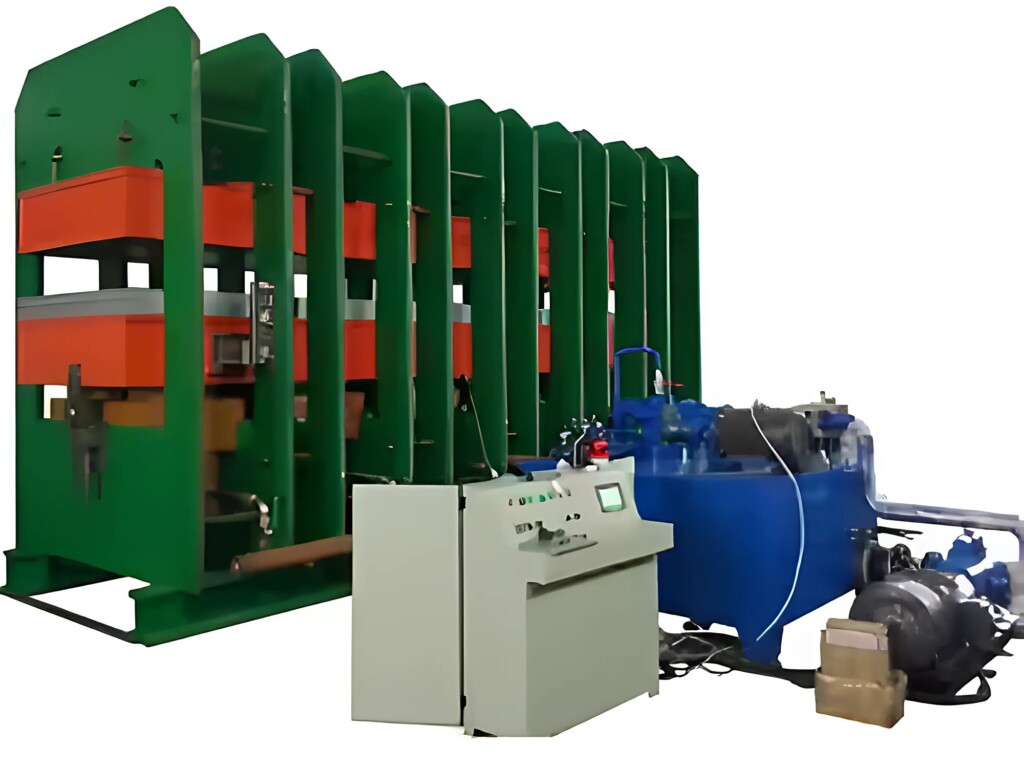Conveyor Belt Hydraulic Press: A Comprehensive Guide

Conveyor belts play very essential roles in material transportation in manufacturing industries. Hydraulic presses actively enhance the strength and durability of these belts. The production of conveyor belts, particularly those consisting of steel cords and textiles, is one of the most important applications of hydraulic presses. Such materials increase the weight-bearing capacity of the belt, making it more resistant to wear and tear.
What is a Conveyor Belt Hydraulic Press?
A hydraulic press conveyor belt bonds rubber, steel cords, and textiles to create a durable, stable belt suitable for tough environments like mining, construction, and heavy industrial applications.
How does the Hydraulic Press Work?
This hydraulic press compresses and bonds together the layers of a conveyor belt through immense force. The two major types of conveyor belts produced with hydraulic presses include steel cord conveyor belts and textile-reinforced conveyor belts. Here’s how they work:
- Steel Cord Conveyor Belts: These belts are impregnated with high-tensile steel cords embedded in the rubber layers, thus they ensure strength and flexibility. The hydraulic press ensures that the rubber firmly adheres to the steel cord, resulting in a heavily loaded belt that remains intact and resistant to breakage or stretching.
- Textile-reinforced conveyor belts: In generally low-weight applications, these belts are made from textiles such as polyester, nylon, or aramid which are usually reinforced. Hydraulic press bonding these textiles with rubber layers yields an extremely strong but relatively light product that has numerous industrial applications.
Key Benefits of Hydraulic Conveyor Belt Press –
1. High Precision and Uniformity:
This is one of the significant advantages hydraulic presses can provide – to apply pressure across the entire belt’s surface. This results in uniform bonding, a very critical aspect of the strength and durability of the belt itself.
2. Belt Strength Enhancement :
For steel cord and textile conveyor belts, it ensures the strong adhesion of every layer by hydraulic presses pressing very hard on each layer. It makes the belt possess the overall strength that gives strength to endure harsh conditions of working and carry heavy loads for long periods without failure.
3. Energy Efficiency:
Hydraulic presses optimize energy use, drastically lowering power consumption throughout the belt manufacturing process. This leads to lower energy costs and more sustainable production. This may lead to a decrease in operational costs for the manufacturer.
4. Individualization:
Hydraulic presses manufacture conveyor belts in varying lengths, widths, and thicknesses. This may give the opportunity to the manufacturer to construct an industrial belt conveyor by considering the special requirements of any industry.
5. More Long Life of Conveyor Belt:
Strong bonding coupled with uniform pressure elongates the life of the conveyor belt. This eliminates the possibility where yet again repeat replacements and maintenance may occur.
Utilization of Conveyor Belt Hydraulic Press –
Conveyor belt hydraulic press is applied in the following industries:
- Mining: To transport considerable quantities of coal, ores, and minerals to engage in mining.
- Construction: To carry construction materials such as sand, gravel, and cement for construction, several steps must be followed to ensure efficiency and safety. First, selecting the appropriate transportation method is crucial, depending on the quantity and type of materials
- Agriculture: They used these to transport grains, seeds, and various other products in agriculture.
- Food Processing: In food processing factories, active conveyors efficiently transport lighter materials like textile-reinforced belts, moving products through various stages of production and ensuring smooth, continuous operation.
Why Steel Cord and Textile Belts?
- Steel Cord Belts: These are applied in high-load applications where the material has to be moved over vast distances without stretching. The steel cords give good tensile strength as well as shock and abrasion resistance to the belt.
- Textile Reinforced Belts: These belts are ideal for lightweight applications, offering flexibility, economy, and efficiency in middle-load tasks.
Conclusion –
Hydraulic presses with conveyor belts are essential for producing high-grade steel cord and textile-reinforced belts, offering the accuracy, strength, and efficiency needed in material handling industries.
For More Information Visit Here

 Compression Molding
Compression Molding